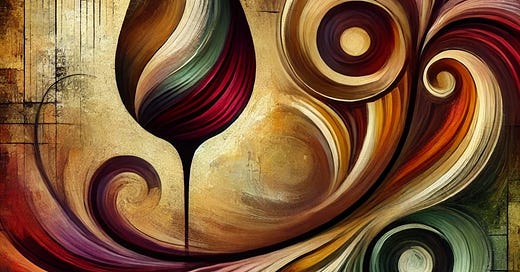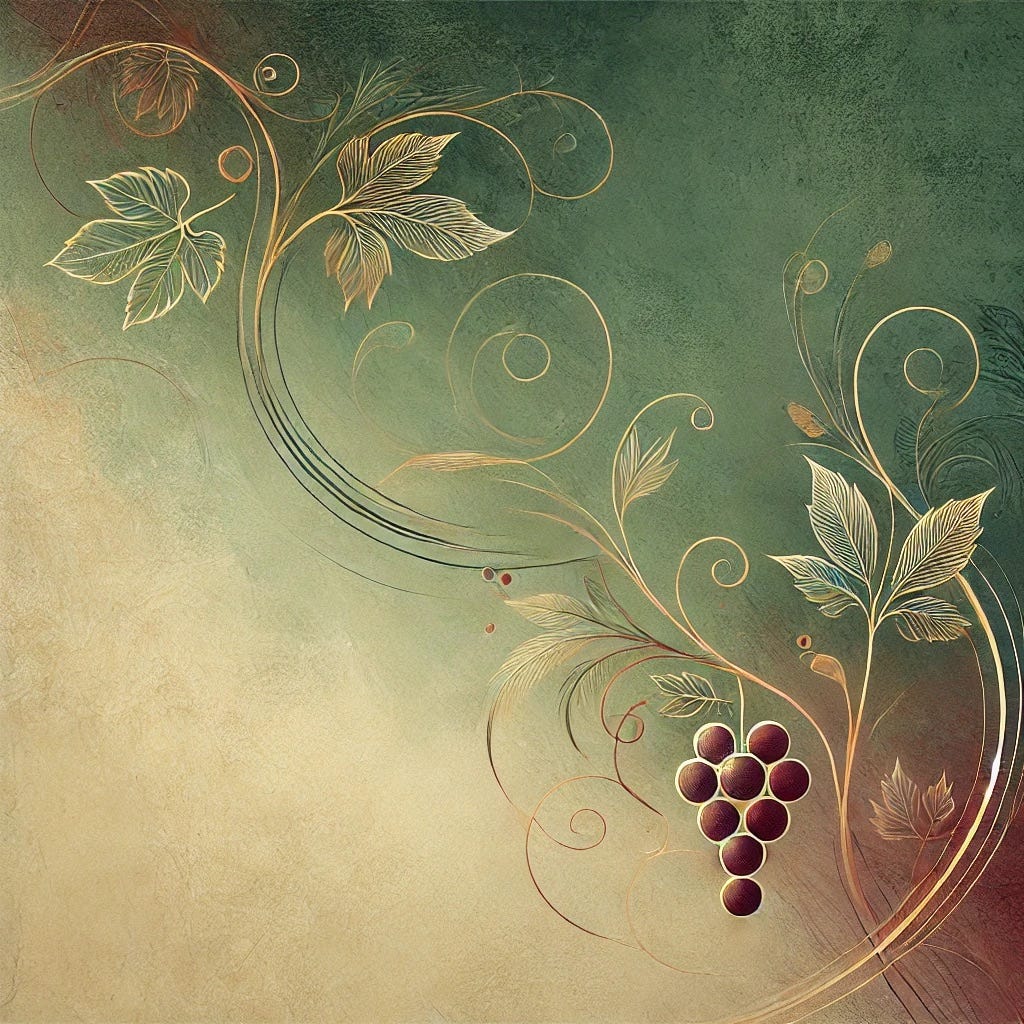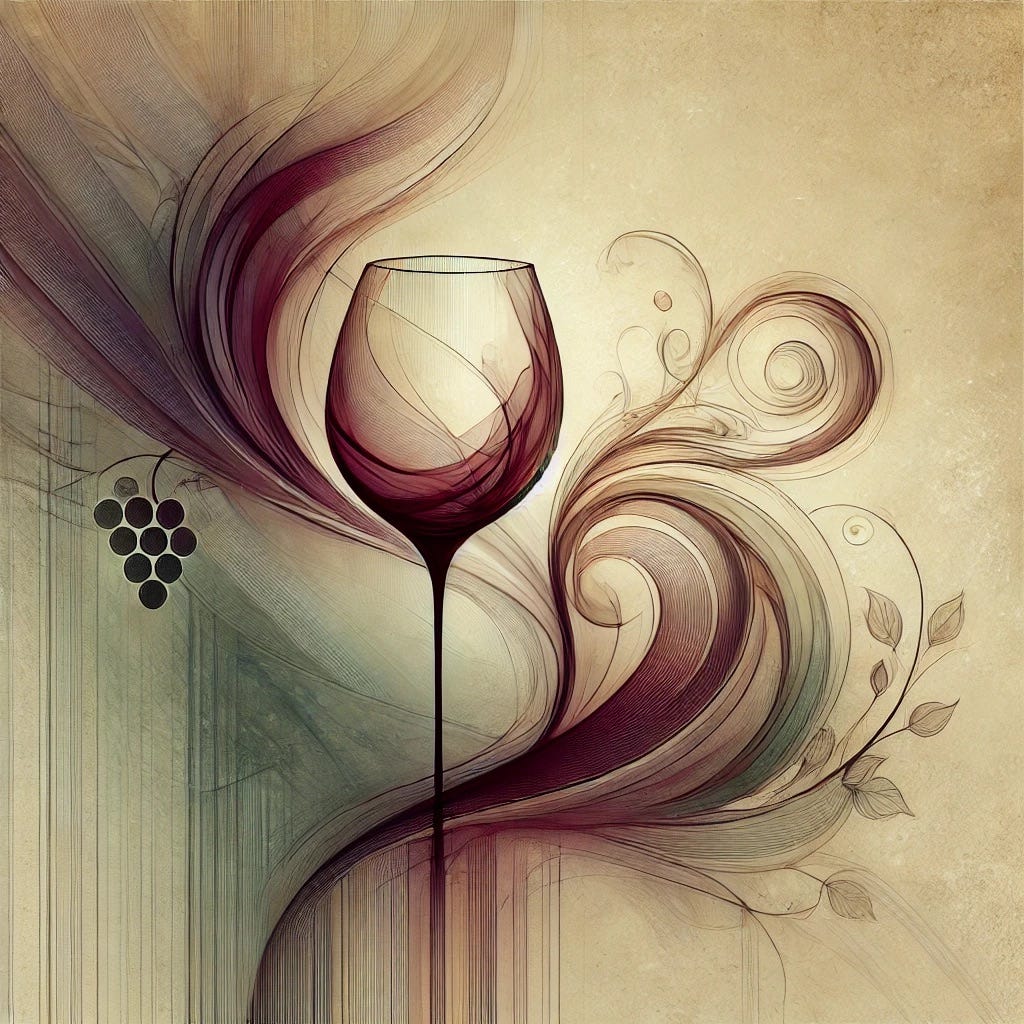NAPA VALLEY, Calif. — If you know a lot about wine, you may be among the people who are finding it to be a bit dreary or monotonous. In particular, you may find that some of the people you associate with have become a little too technical and are not enjoying it as much as they once did, which kind of makes it a little more scientific than you care to worry about.
Some people speak more about clones, malolactic, Nevers oak and lees contact. Some of what they say may be accurate, but snobs never let facts get in the way of their performance. Indeed, their demeanor can be so aggressive that it wipes out any hope anyone has of correcting them – or of enjoying the wine.
These folks didn’t get this way overnight. And it is all the more discouraging when you chat with people you once knew as friends who were, when you met them, only mildly interested in wine. Later, they may have developed this exalted sense of themselves and their own palates – to the point where it became almost overbearing to hear.
As a writer on wine, I take pride in helping people understand and appreciate some of the more abstruse elements in it, like the grass/cat pee in New Zealand sauvignon blanc, the fennel in young pinot gris or the aging potential of some rieslings.
That’s my job. As a wine educator, I relish my role in taking an otherwise inert and complicated beverage and investing time to learn about it, then crafting a simple, easy-to-understand reaction to it that cannot come close to the actual act of consuming it.
Reading words about wine is to the consumption of it like looking at pictures of a heralded opera. A picture may be worth a thousand words, but it isn’t worth anything in terms of hearing the music, seeing the costumes, experiencing the drama.
Indeed, the words of the wine snob usually end up causing more confusion than providing any enlightenment. There is a huge gap between a plethora of words that are used to explain something and the actual experience.
Education Leads to Explication
The education of specific wines ultimately leads to a better understanding of what they should be. And a serious wine education should include consuming various versions over many years. To me, understanding the greatness of any wine includes understanding details of how it behaves under varying circumstances. The more we understand about it, the more we appreciate it.
As an example, walk into a stereo store in which the guy in the sound room is a stereophile of the first water. Unasked, he starts talking about ohms and impedance, and decibels and cross-over channels and heaven knows what. And he makes no sense at all because of the technotalk gobbledygook that infects this obscure (to me) world.
To me, it sounds like esoterica gone berserk. The type of wood used to make the speaker cabinet is not only vitally important to this guy, it is life itself. The type of stereo cable you buy, he says, ought to be mandated by the law: Violating the Stereo Penal Code is a felony; buy the wrong cable, go to jail.
Challenge your vocabulary with this week’s mystery word. Submit your answer in the poll, and check the bottom of the page for the correct answer.
The stereo analogy ends with you feeling like a complete idiot unless you spend more than the price of a Maybach for something that will not fit into your SUV. So you say something polite about wanting a good quality stereo for your family room, and he says something about hearing it.
You walk into the padded cell with the lights turned low (how that help helps make the stereo sound better is beyond my ken), and he begins to adjust a dozen knobs and switches. Lights blink. There is the sound of air whooshing through the IRT tunnel at 3 a.m. And then out comes a sound from two speakers each the size of a sea-going container. It sounds like a cybertruck colliding with the Hindenburg.
The stereo maven says, “Well, waddya think?’’ and you finally say something cogent, like, “Loud, isn’t it?’’
Knowing Wine Should Be Loving It
Wine knowledge can be a little like this. You’re sharing a glass of wine with this snob, and the first thing he says de-grape-alizes (a form of “dehumanizes’’) the liquid. Instead of just sipping in silence and enjoying it, he wants your opinion of his opinion of its quality — and in agonizing technical detail.
Quite simply, this is just no way to try to enjoy wine.
This subject occurred to me as a result of reading the comments of a wine critic who was experiencing nirvana (at least that what the review’s words sounded like) with a particular by which this individual was so overwhelmed that he or she gave it 99 points and used words that might best be utilized in the red-light district of Amsterdam.
Why this particular review amused me was that I had never heard of this reviewer before. The fact that he or she (the given name could have been either gender or none) was going bananas over this particular cabernet (only cabernet qualifies for 99 points) was perfectly appropriate. Everyone has the right to an opinion.
But since I had no idea what justification was used to accumulate all of those points, I was prepared to reply to this wine critic with a series of questions – until I realized that a Ph.D.-thesis-length query would be required and still would not have any impact on this individual. He can’t possibly know my palate, and I can only guess at his/hers, so the score doesn’t mean anything to me.
In fact, the ability of a person to fairly and accurately judge wine is often (almost always in the United States?) based not upon formal technical training as much as on an assumed sixth sense about wine. Like, “I love this.” No parameters are necessary.
Here is a truism I learned 40 years ago: Though many wine-knowledgeable people can judge wine perfectly well, some of them are horrible judges of wine because they rely on faulty premises. One of them is overwhelming subjectivity.
Also, a number of people who lack formal wine training can also judge wine quite accurately because they understand the gestalt of it, the entire experience under which wine is best seen. Such people are not particularly rigid; they are flexible and willing to look beyond a quick sniff and a swig.
Indeed, rarely does the wine snob have all the right answers, but frequently he sounds as if he does. And the wine novice doesn’t necessarily lack any skill to judge wine fairly. Wine quality must be seen in context. Cabernet with crab anyone?
One such context relates directly to cabernet sauvignon. When it is made to be an extremely fine wine, when it comes from an exalted vineyard and normally costs a lot of money, evaluating it based on its ability to please immediately is a fatal flaw in what is otherwise considered to be the manifest destiny of a great cabernet.
A “great” cabernet that is judged to be great when it is young because a reviewer loves the way it tastes as a young wine is, for me, an error.
For me, a great young cabernet must have balance and structure along with some specific characteristics that are not particularly likable when the wine is young, such as good acidity and some astringency. To a degree, both are essential if the wine is to develop the complexities that we all know cabernet can deliver with time.
About 25 years ago, during one of my wine competitions, one of my judges who was in training (his scores did not count) heard me speak to the senior judges. A few days later, he wrote me an email saying he knew that he and other judges who were in training need not be technically perfect to appreciate the niceties in a bottle of wine.
Here is part of that e-mail:
“[I appreciated] your speech on the quality of [that] judging. Although I still feel personally a bit like an imposter, I am willing to accept the comments as generally true. … Even if there is a stray judge that is not up to par, the fact that you have panels of four judges should be a safeguard.
“With regard to my own feelings of inadequacy hinted at above, I still feel them when around so many people whose noses and palates seem to be able to detect, and above all describe, nuances that escape me. I thought of an analogy. It is as if I go to a concert hall. The people around me are talking about how the violin section should have two more members, the conductor should have rehearsed the horn section one extra day and the sound of the clarinets was a little bit too bright for the intention of the composer because it was well known that when Haydn wrote the piece it was played on certain instruments that were constructed differently from the way they are today.
“Overall, however, they thought it was a worthy effort. All of them could write a 500-word review. All I could tell, on the other hand, was that it was a classical piece (rather than romantic), that it was in a minor key, that it was in tune, that the orchestra played well and that overall the emotion in the music was well served by the conductor. I would probably give it the same overall review, but in about 25 words instead of 500.
“Sometimes I feel like my nose just lacks enough sensors or something! Does everyone go through this in learning about wine? I mean, I recognize that I have gotten better over time. For example, I used to be able to recognize the effect of wood clearly only in white wines. One day I ‘got’ what the component was in the reds that was wood.”
He spoke of learning this, slowly, by doing barrel tastings at a winery owned by a friend, and he added, “I suppose those kinds of revelations happen regularly, one after the other, through time and experience. How much of this is mental and how much physical? How much is learned and how much innate? Those questions both fascinate and confound me.”
The fact is, we have an experience with something that changes us, and unless we make a radical change in the way we approach learning, we stay with our prejudices, sometimes to the detriment of our leaning about the broader spectrum of experience.
As a child my mother once had a very bad experience with spinach. She never again ate spinach. Just the sound of the word filled her with revulsion. My stepson once had a bad experience (believe it or not) with whipped cream, and he has not had whipped cream since. I once knew a man who worked on a tomato boat that shipped tomatoes from Mexico to the United States. Once he left that job, he never ate another tomato in any form.
Until 1994, I didn’t eat olives. I couldn’t understand the interest in them. After being badgered by a friend that I was missing out on great taste treats, I began to look at olives with more deliberation. Soon I realized that canned olives were awful and that fresh cured olives were usually a lot better. Today I love some olives and detest others.
In seeking wine judges for my wine competitions, I do not want wine snobs – even if they can identify which grapevines a particular wine came from. Far better are those who love wine with a passion that runs deep, a person who is not so rigid that he or she has a strong, almost impenetrable, bias against a particular element or elements in wines. (I once had to dismiss a woman who declared that she hated sauvignon blanc.)
Most of the people I associate with who are wine-lovers are flexible and do not automatically think in terms of good, better and best but instead approach wine with a sense of fascination. They are people who see the joy in many different wines precisely because of their uniqueness – whether it’s made from chardonnay or dechaunac, riesling or baco, merlot or xarel-lo.
It was only after I began writing about wine that I realized that there are no secrets to this game. If you drink wine regularly and you find there to be a fascination in off-dry chenin blancs, enjoy them. Sure, you may have to hide a few bottles from your friend the wine snob who brings over the dead-as-a-doornail Chassagne-Montrachet and implores you to tell him what you really think of it.
Maybe in this case the emperor has a very strange tailor.
Being a true wine-lover means having to say out loud that some $200 cabernets are awful and that some $30 ones are fascinating. This may make your wine-collector friends (and potential snobs) believe you are a heathen. But I think this is a small price to pay.
An interesting woman once asked me if I lived by a wine social code. I said, “Be of courage. Stand your ground. Liking wine is its own reward. Be open-minded enough to judge a thing on merits found only in the joy that comes from knowing that wine is better than the alternative, which is no wine.”
Wine Discovery
2022 Frog’s Leap Merlot, Rutherford ($50) — When a Napa Valley red wine has barely 13½% alcohol and doesn’t require a second mortgage to obtain, you can be assured that it was no accident. John Williams has been doing this for decades with aplomb at Frog’s Leap. Knowing exactly where to grow merlot helps. For all this time, Frog’s leap has produced merlots that illustrate just how beautiful a wine can be that exhibits ultimate drinkability when young and has the structure to develop with a few more years in the bottle. The aroma here is pure merlot with dark fruit that is balanced and far silkier than most other wines of this type. The wine is actually quite succulent, but because of lower alcohol and good acidity, it pairs beautifully with medium-weight meat or chicken dishes. This wine was just released. The 2021 version is equally engaging and maybe more easily discovered.
This Week's Word Challenge Reveal:
The correct answer is C: Effortless elegance. “Sprezzatura” is an Italian term originating from Baldassare Castiglione's “The Book of the Courtier,” where it is described as the ability to perform tasks or display style and skill in a way that appears natural and without effort. It conveys a sense of graceful nonchalance, often admired in art, culture and fashion. We hope you enjoyed this week’s challenge and look forward to next week’s word.
If today’s story captured your interest, explore these related articles:
Dan Berger’s Wine Chronicles: Overpriced Wines — Who’s to Blame?
Dan Berger’s Wine Chronicles: The Depth and Versatility of Sangiovese
Dan Berger’s Wine Chronicles: Uncovering the 'Soul' of Noble Reds
Explore all Napa Valley Features stories on our main page.
Dan Berger has been writing about wine since 1975.
The views, opinions and data presented in this article are those of the author and do not necessarily reflect the official policy, position or perspective of Napa Valley Features or its editorial team. Any content provided by our authors is their own and is not intended to malign any group, organization, company or individual.










On the comments from your judge in training, each individual has a different range of sensitivities to odors, tastes, acids, tannins, residual sugars, sulfur, and alcohol, among others. Some scientists say we start with sensitivities coded into our DNA and then expand our horizons and fine-tune our preferences by personal experiences. This is even demonstrated in blind tasting programs with Master Sommeliers and Masters of Wine. Their preferences vary. They have developed vocabularies over the decades and markers for wine varietals (e.g. new-mown hay as a starter for Sauvignon Blanc, berries and cassis for Cabernet Sauvignon, stone fruit for Chardonnay). These experts are good at noting when others pick up different nuances and favorites. This gets to the bottom line of enjoying wine: if you like it, it's good, even if you don’t have the technical vocabulary to describe it, and no matter what anyone else might think or score.
Agree, and smart analogy with the stereo shop or any other highly evolved product. I first noticed wine snobbery was alienating back in the 1990s, the discussion of wine had become exclusive. Well, now that the snobs excluded a couple generations of wine drinkers, here we are. Whoops!